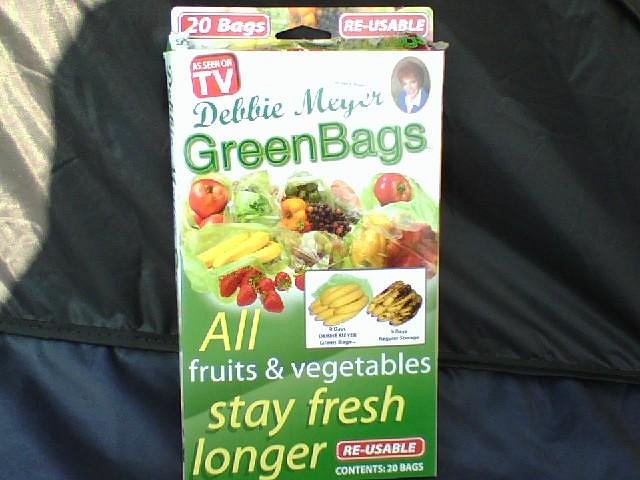Tiki Central / Tiki Drinks and Food
should a whole fresh pineapple be chilled?
Pages: 1 4 replies
|
H
heelgrinder
Posted
posted
on
Thu, Aug 14, 2008 9:29 PM
Pretty sure no one has asked this DUMB question yet, but... I just bought three whole fresh pineapples for a gathering this weekend, and I'm wondering if I should stick them in the fridge or if they'll be okay until I slice 'em up on Saturday. Any pineapple geniuses out there? |
|
T
Tikiwahine
Posted
posted
on
Thu, Aug 14, 2008 9:54 PM
Mine get over ripe so fast, I'd slice it up now and keep the bits with the juice in the fridge until needed. Unless you plan on using the exterior as a vessel. 'Course I could be wrong. |
|
H
heelgrinder
Posted
posted
on
Thu, Aug 14, 2008 11:36 PM
yeah, i was planning on using 1-2 of them as a fruit salad container. I feel like such a noob! |
|
TG
The Gnomon
Posted
posted
on
Fri, Aug 15, 2008 9:06 AM
I haven't tried them on pineapples yet, but in theory these things should have a beneficial effect.
Produce ripens and decays faster in the presence of ethylene gas, which is produced by the plants themselves. The ethylene production of a plant can range from very high to very low depending on the specific plant. Plants are also sensitive to ethylene from low to high. Regardless of overall sensitivity, certain plants are affected in other ways, often adversely. A lot of produce that you find in stores, because it has to be picked when it is green and is less susceptible to bruising and damage, is forced to ripen faster after shipping by being ethylene gassed (tomatoes in particular). That's why tree-/vine-ripened local produce always tastes better. It's allowed to ripen naturally and retain its flavor. When stuff that's picked green ripens, it has never had the opportunity to fully develop its flavor. Limes are very low ethylene producers with moderate sensitivity, but if you keep them in a bowl with apples, pears, avocados, passion fruits or other high and very high producers, the ethylene wreaks havoc on the lime skin. Anyway...ethylene generally accelerates ripening and decay in fruits and vegetables, some quicker than others. These green bags absorb ethylene, so they slow the decay process. I bought three lemons last December (which I don't use much over the winter) and put them in a green bag and stored them at room temperature. In February I needed two of them, so I checked the green bag to see how they were doing. They looked OK, so I used them. They were juicy and actually much better than lemons used right from the store. The other one I kept in the bag just to see how long it would last before it caved in. Unfortunately, I caved in before the lemon did. In the middle of May I tried it. It was just as good as its predecessors, but a little different. Not sure if it would be considered overripe but I don't think it would have lasted much longer. A box of bags costs about $10. Up until recently, I only found them in BB&B, but I just bought another box at my local Giant Food. Here's a link about ethylene gas. It has a chart listing over 100 produce items and a few live plants giving ethylene production and sensitivity for each. Although pineapples are low producers and have low sensitivity, ethylene induces flowering in them, which is a sign of ripening/maturity. That makes the bags definitely worth trying. Jeez! My misspellings are real words, so spell check can't save me either... [ Edited by: The Gnomon 2008-08-15 09:10 ] |
|
CAA
Chip and Andy
Posted
posted
on
Fri, Aug 15, 2008 8:32 PM
Pineapples contain no natural starches so once they are picked, that is all they are going to get as far as ripening/flavor production. To get a good pineapple, look for fruit that is a good size for what you are doing. Look for fruit that feels heavy for its size. Make sure all of the 'eyes' of the fruit are more or less the same size and that the color is mostly uniform. Lastly, smell the stem. Good fruit will smell good. If it has no smell, it will have no taste. As to keeping them in the fridge or not, they will keep longer in the fridge, but only by a couple of days. Put them in the bottom/coldest part of your fridge for the maximum possible storage time, the goal is to get them as close to freezing without actually freezing. Fair warning if you are going to use the pineapple as a vessel or garnish: keeping pineapples in the fridge will turn the crown brown and will darken the overall appearance of the fruit. Not a bad thing, just warning you. And, to get the best flavor from your fruit, bring them back to room temperature before carving and serving. |
Pages: 1 4 replies

